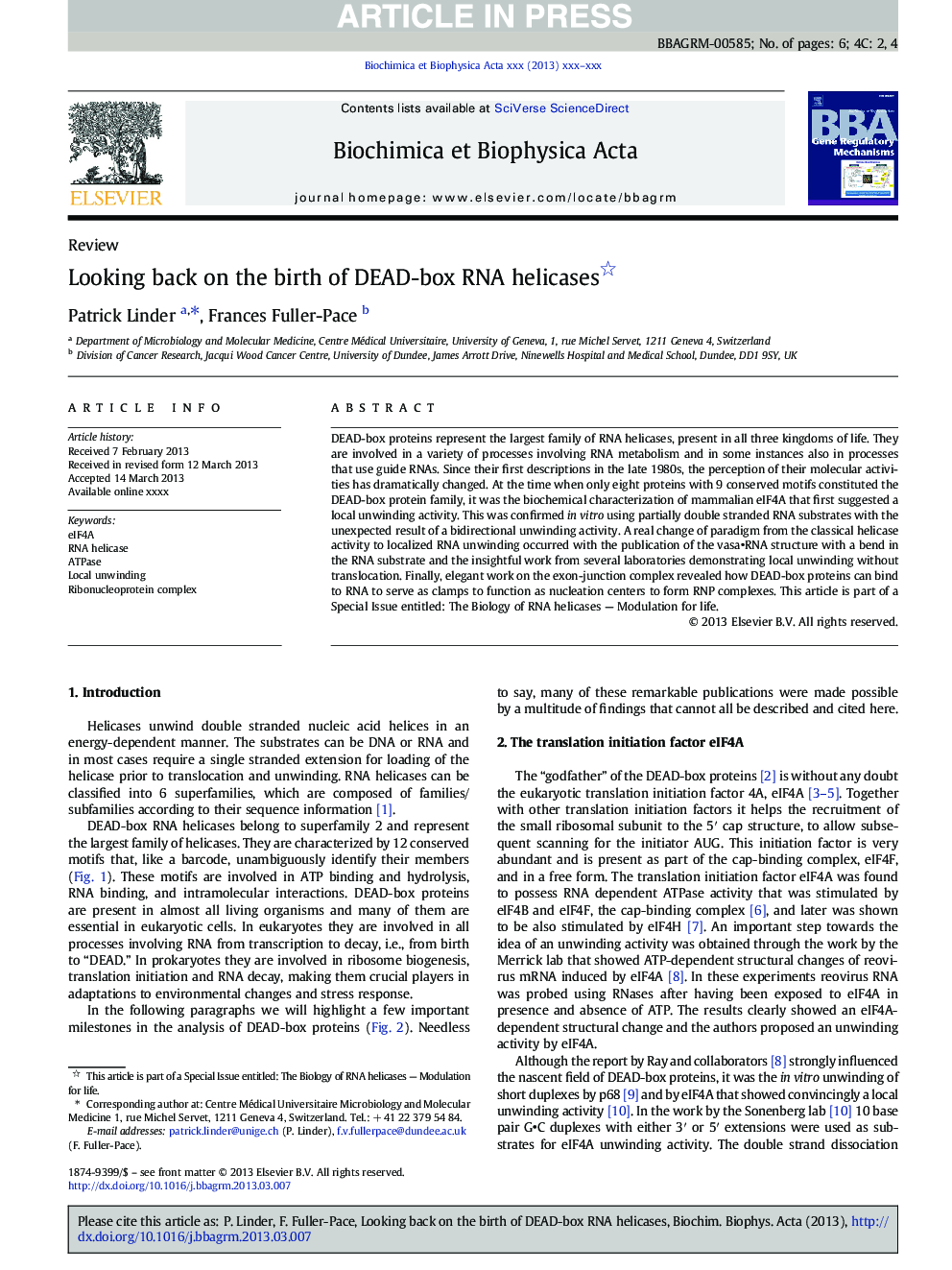| Article ID | Journal | Published Year | Pages | File Type |
|---|---|---|---|---|
| 10799209 | Biochimica et Biophysica Acta (BBA) - Gene Regulatory Mechanisms | 2013 | 6 Pages |
Abstract
DEAD-box proteins represent the largest family of RNA helicases, present in all three kingdoms of life. They are involved in a variety of processes involving RNA metabolism and in some instances also in processes that use guide RNAs. Since their first descriptions in the late 1980s, the perception of their molecular activities has dramatically changed. At the time when only eight proteins with 9 conserved motifs constituted the DEAD-box protein family, it was the biochemical characterization of mammalian eIF4A that first suggested a local unwinding activity. This was confirmed in vitro using partially double stranded RNA substrates with the unexpected result of a bidirectional unwinding activity. A real change of paradigm from the classical helicase activity to localized RNA unwinding occurred with the publication of the vasa
- RNA structure with a bend in the RNA substrate and the insightful work from several laboratories demonstrating local unwinding without translocation. Finally, elegant work on the exon-junction complex revealed how DEAD-box proteins can bind to RNA to serve as clamps to function as nucleation centers to form RNP complexes. This article is part of a Special Issue entitled: The Biology of RNA helicases - Modulation for life.
- RNA structure with a bend in the RNA substrate and the insightful work from several laboratories demonstrating local unwinding without translocation. Finally, elegant work on the exon-junction complex revealed how DEAD-box proteins can bind to RNA to serve as clamps to function as nucleation centers to form RNP complexes. This article is part of a Special Issue entitled: The Biology of RNA helicases - Modulation for life.
Related Topics
Life Sciences
Biochemistry, Genetics and Molecular Biology
Biochemistry
Authors
Patrick Linder, Frances V. Fuller-Pace,
